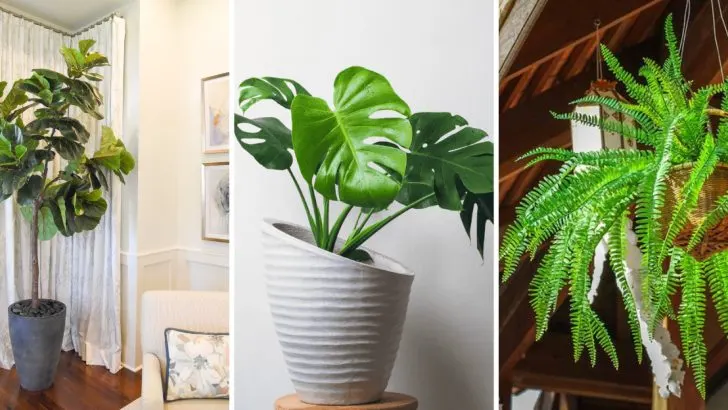Some plants just aren’t built for chilly weather—no matter how stunning they are. The moment temperatures dip, their leaves droop, colors fade, or worse, they stop growing altogether. It’s not personal; they’re just wired for warmth and don’t take kindly to frosty nights or cold snaps.
These are the showy types that thrive in the warmth and add serious flair to patios, porches, and indoor corners. But once the cool air rolls in, they either need to come inside or get some extra care to survive. Here are 20 decorative plants that love the heat—and might not forgive you if you forget.
Fiddle Leaf Fig
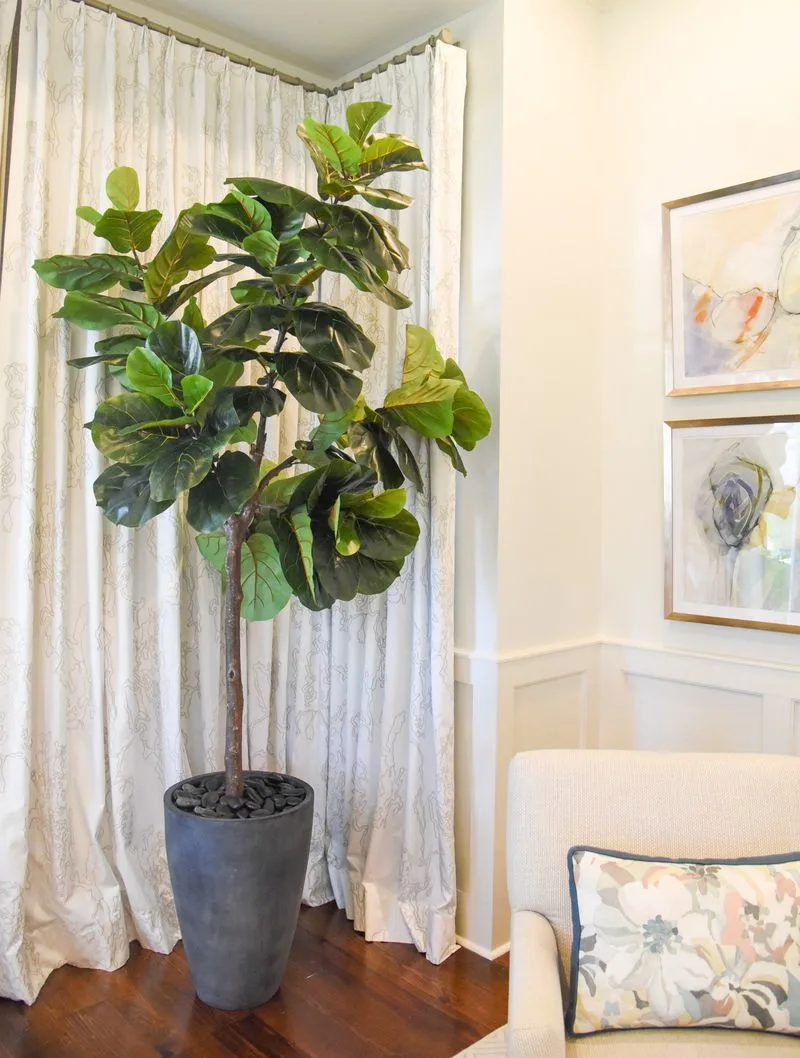
With its towering height and broad, glossy leaves, the Fiddle Leaf Fig is a popular choice for indoor decoration. Originating from the tropical rainforests of West Africa, this plant adds a touch of elegance to any room. However, it shies away from cold temperatures and thrives best in warm, humid environments.
To keep your Fiddle Leaf Fig healthy, position it near a sunny window and ensure it is shielded from drafts. Water it regularly, but be cautious of overwatering. A fun fact: this plant is known for its air-purifying qualities, making it both beautiful and practical.
Monstera Deliciosa

Monstera Deliciosa, with its signature split leaves, brings a tropical vibe to any space. Often seen in trendy interiors, this plant is native to the humid jungles of Central America. While it’s visually striking, it does not fare well in cold climates.
For optimal growth, place your Monstera in a well-lit area away from direct sunlight and frost. Water it when the soil feels dry to the touch. Did you know? The unique holes in its leaves are believed to allow strong winds to pass through without damaging the plant, a natural adaptation from its wild origins.
Bird of Paradise
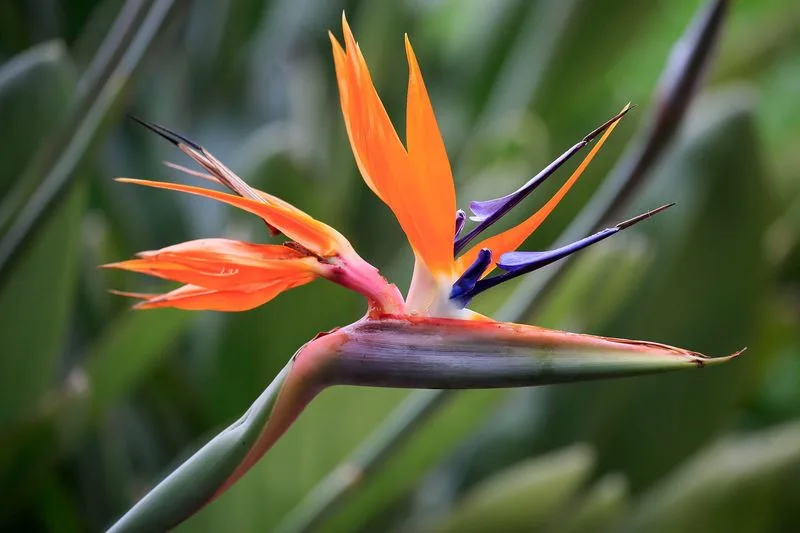
Resembling a tropical bird, the Bird of Paradise is a striking addition to any plant collection. Its dramatic flowers, bursting with color, are sure to capture attention. However, this South African native requires warmth and sunlight to flourish, making it vulnerable to cold weather.
To enjoy its vibrant blooms, place it in a bright spot indoors and ensure it receives plenty of light. Keep the soil slightly moist but avoid waterlogging. Interestingly, in its natural habitat, the stunning flower is pollinated by birds, adding a touch of exotic charm to its story.
Boston Fern
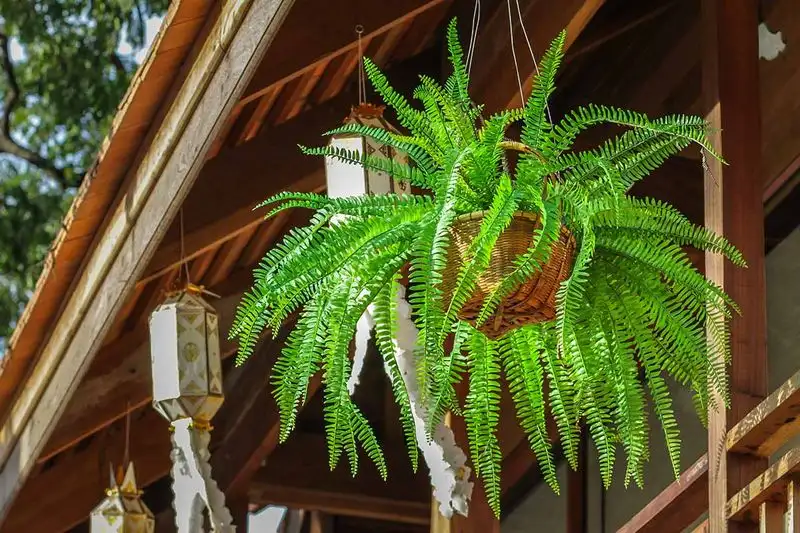
The Boston Fern, with its feathery fronds, is a classic choice for hanging baskets and indoor pots. Originally from tropical rainforests, it prefers humid, warm conditions. Its delicate nature means it must be protected from cold drafts.
Place your Boston Fern in indirect light and maintain high humidity levels for best results. Mist the plant regularly or use a humidity tray to keep it thriving. Fun fact: Boston Ferns are excellent air purifiers and are particularly effective at removing pollutants like formaldehyde from indoor environments.
Orchid
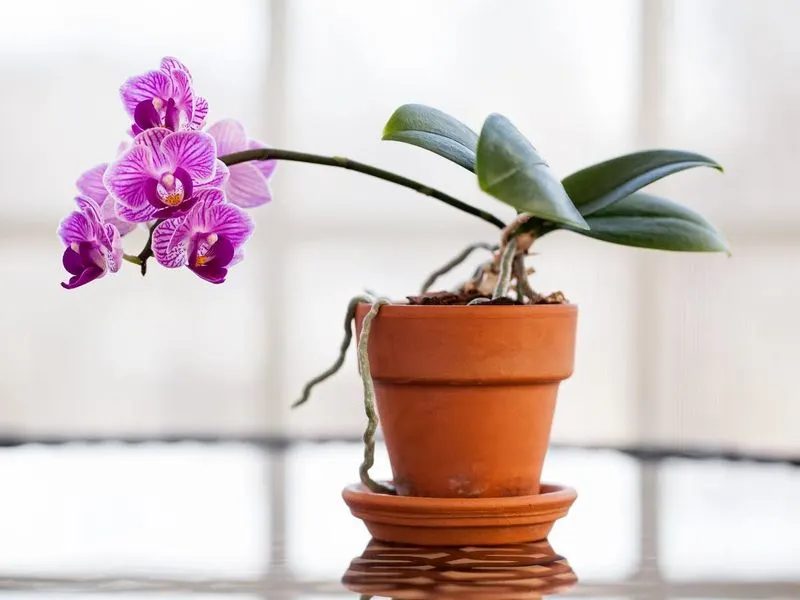
Known for their intricate and exotic flowers, Orchids are a favorite among plant enthusiasts. These tropical beauties need warm, humid environments, making them unsuitable for cold temperatures.
To keep your Orchid blooming, provide it with indirect sunlight and a well-draining potting mix. Water it sparingly, allowing the roots to dry out between waterings. Did you know? Orchids have a rich history dating back to ancient Greece, where they were associated with fertility and virility.
Calathea

Calathea’s stunning leaf patterns make it a standout plant for any home. Originating from the tropical Americas, it’s accustomed to warm, humid climates. Cold weather can cause its leaves to curl and fade, losing their vibrant appearance.
For a thriving Calathea, place it in low to medium light and maintain high humidity. Regular misting can help keep its leaves lush. A quirky fact: Calathea leaves move in response to the light’s intensity, a phenomenon known as nyctinasty, which is a beautiful dance for any observer.
Rubber Plant
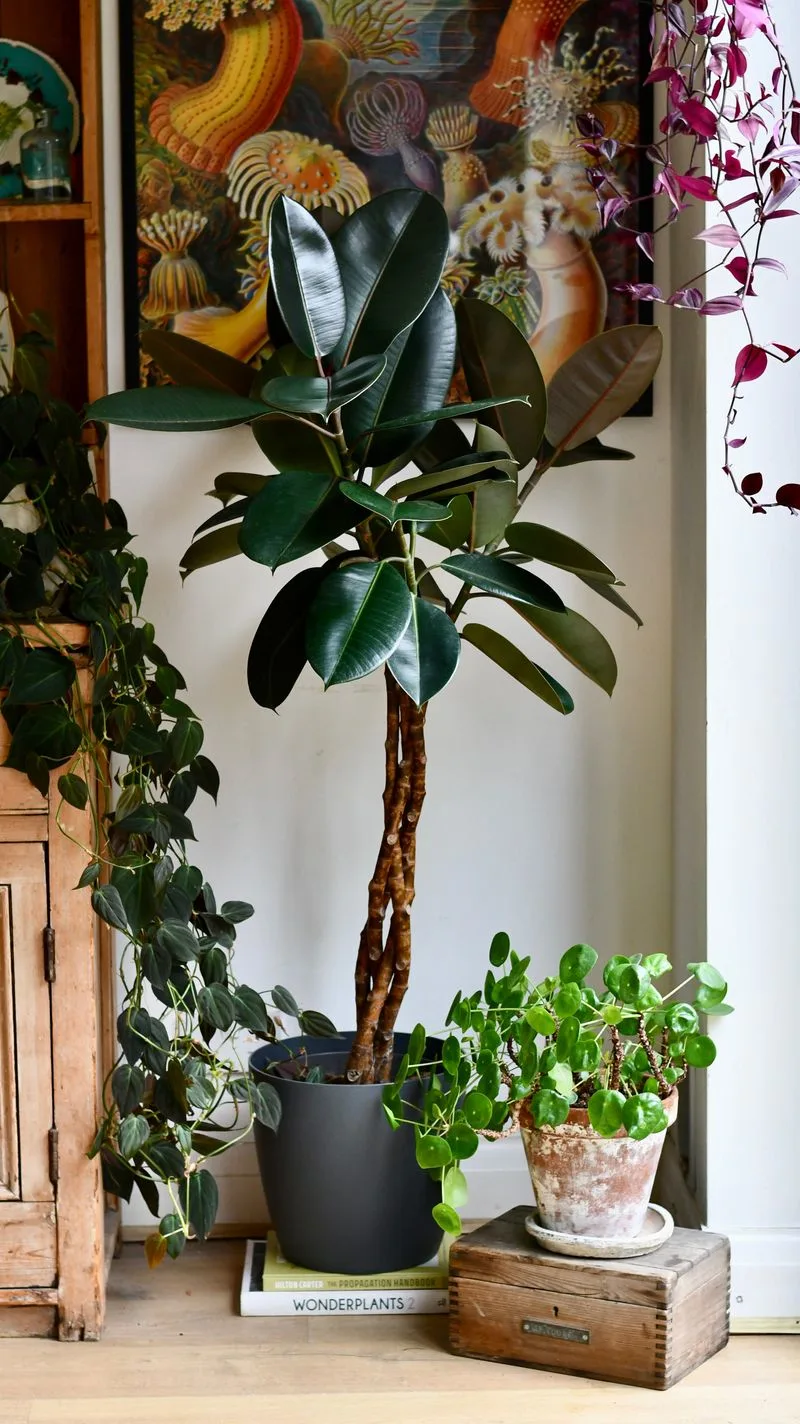
The Rubber Plant is admired for its glossy, rubber-like leaves that add a touch of sophistication to any space. Native to Southeast Asia, it thrives in warm, humid conditions, making it susceptible to cold damage.
Position your Rubber Plant in bright, indirect light and water it when the soil feels dry. It’s essential to avoid sudden temperature changes. Fun fact: The Rubber Plant was once a primary source of natural rubber before synthetic alternatives became prevalent.
Peace Lily
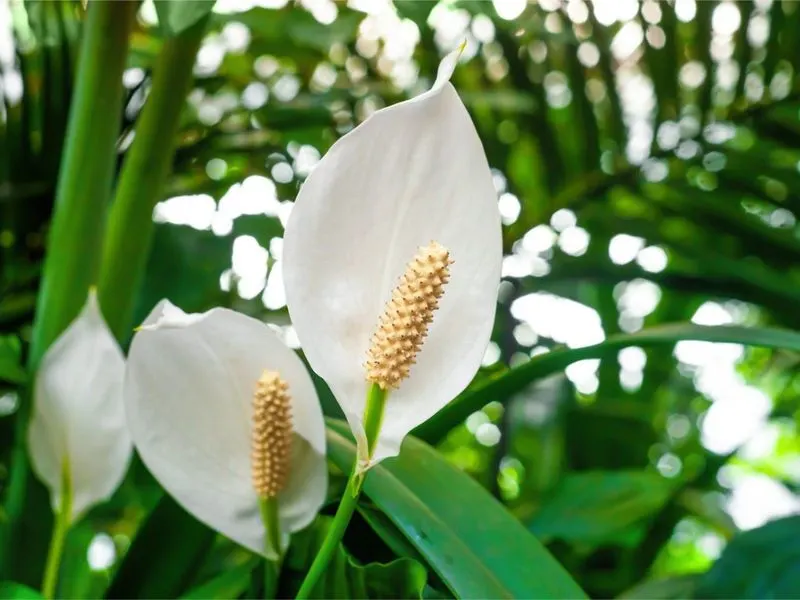
With its graceful white blooms and lush green leaves, the Peace Lily is a symbol of tranquility. Originating from the tropical rainforests of Central and South America, it doesn’t tolerate cold conditions well.
Keep your Peace Lily in indirect sunlight and water it regularly, being careful not to overwater. It thrives in a warm, humid environment. Did you know? The Peace Lily is not a true lily but a member of the Araceae family, and it’s known for its air-purifying qualities, making it both a beautiful and healthy addition to your home.
Alocasia
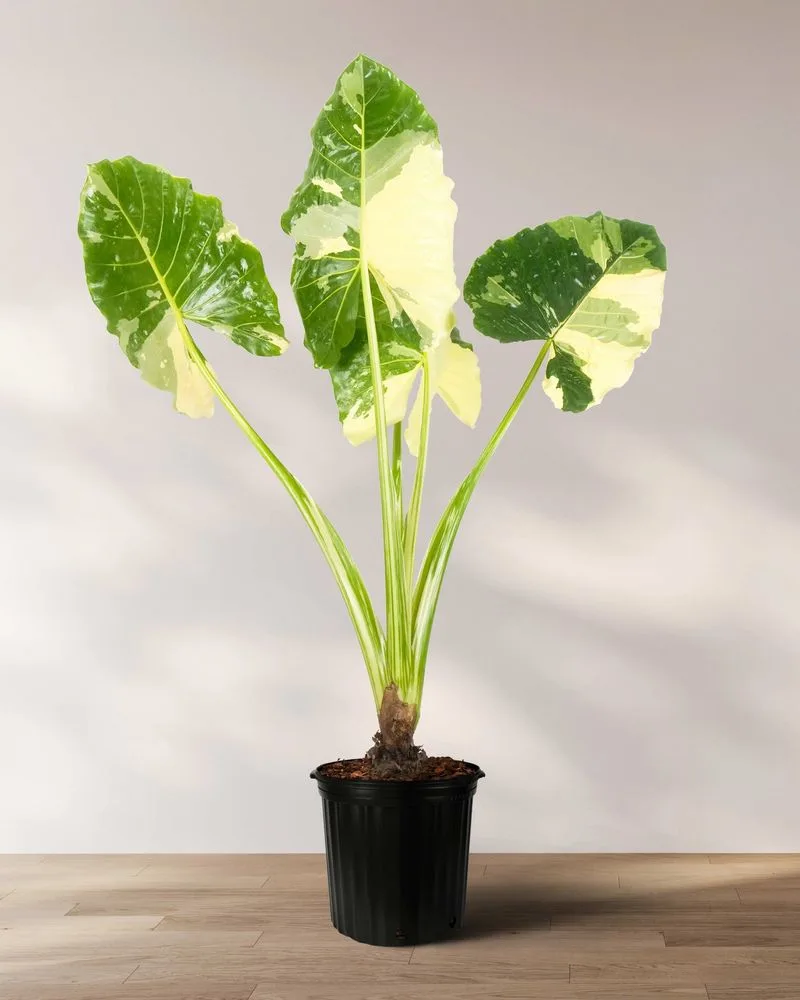
Alocasia, with its large, ornate leaves, is often referred to as the “elephant ear” plant. Native to the tropical regions of Asia and Eastern Australia, it demands warmth and moisture to thrive, making it vulnerable to cold climates.
For optimal growth, place your Alocasia in bright, indirect light and keep the soil consistently moist. Avoid exposing it to drafts or sudden temperature changes. An interesting tidbit: Alocasia plants have been cultivated for over 28,000 years, primarily for their edible corms, which are a staple in many tropical diets.
Croton
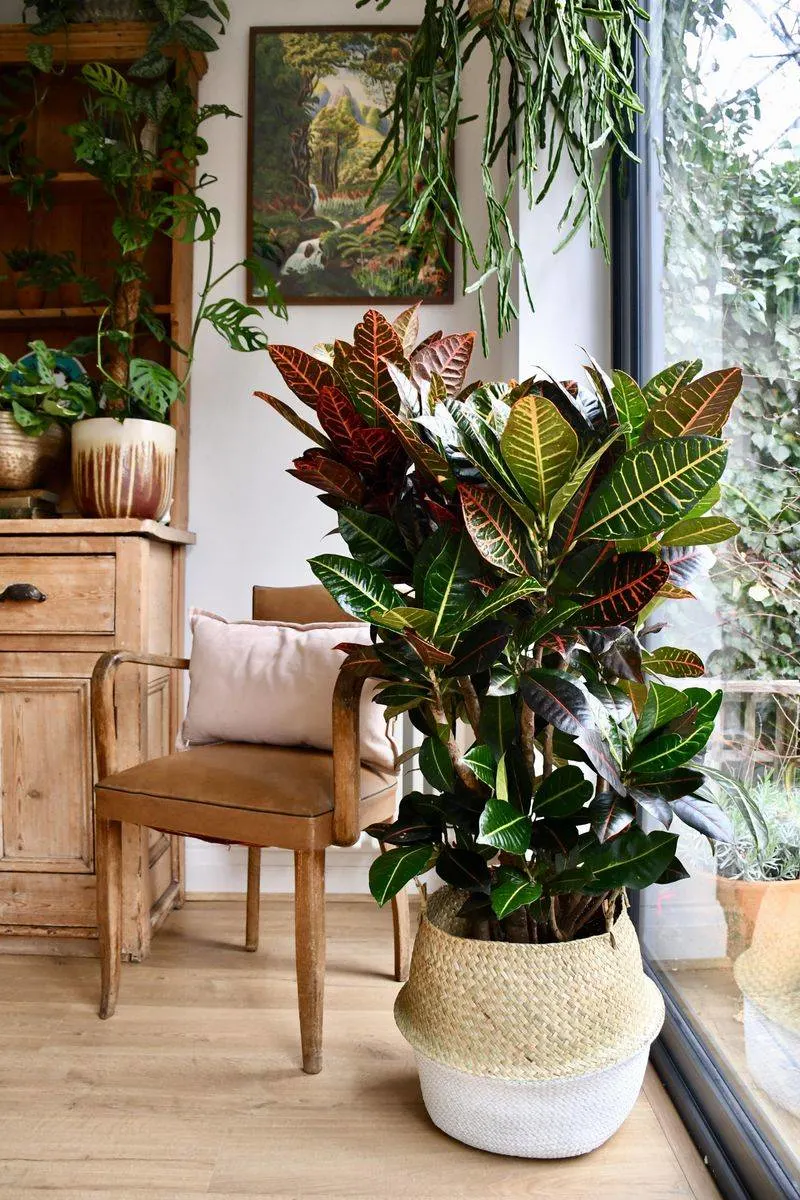
Crotons are celebrated for their bold, variegated foliage that can brighten any indoor space. Originating from the tropical regions of Southeast Asia, they require warm temperatures and high humidity to maintain their vivid colors.
To keep your Croton healthy, place it in bright, indirect light and water it regularly. Ensure the humidity levels are high to prevent leaf drop. An interesting fact: In its native habitat, Croton leaves are used for medicinal purposes, showcasing its versatility beyond decorative appeal.
Dieffenbachia
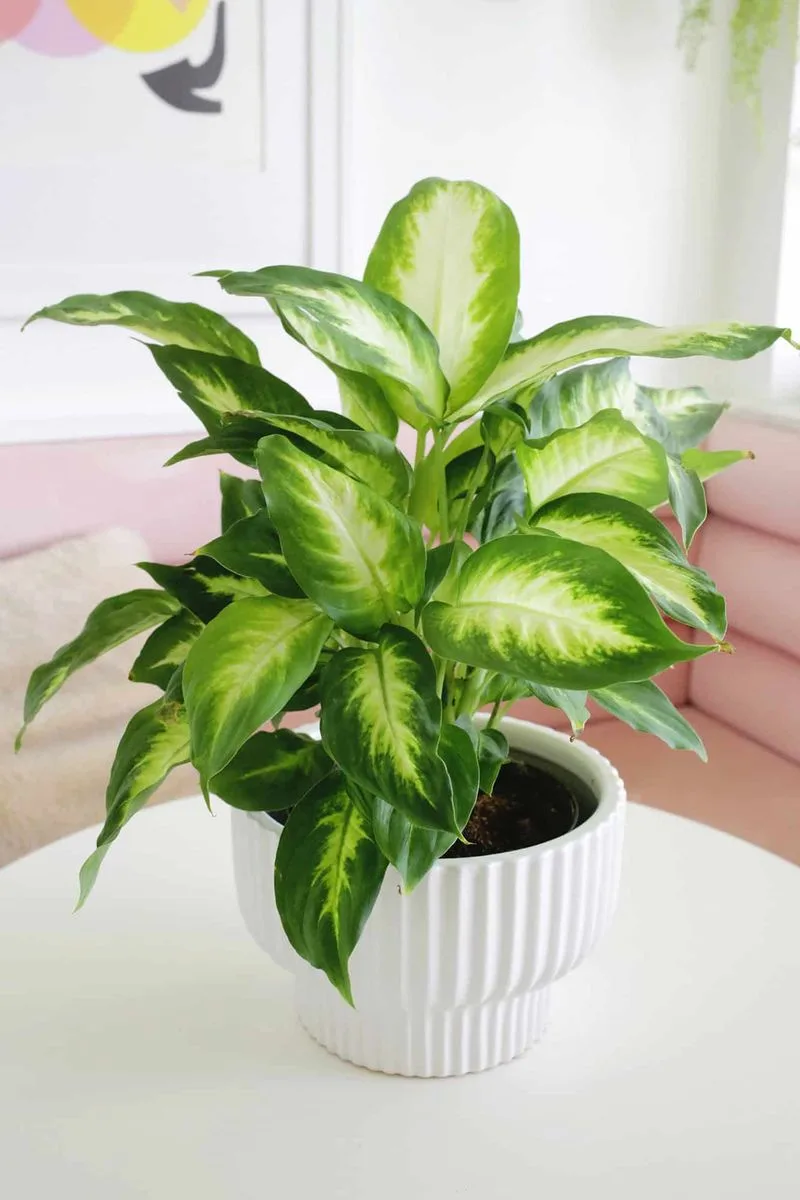
Dieffenbachia, often called “dumb cane,” is known for its striking leaves and lush appearance. Native to the warm, humid climates of Central and South America, it’s sensitive to cold weather.
For best results, place your Dieffenbachia in indirect light and maintain a consistent watering schedule to avoid drying out its soil. Fun fact: The plant gets its nickname from the irritating sap that can cause temporary speechlessness, which is a quirky, if somewhat cautionary, trait.
ZZ Plant

The ZZ Plant is renowned for its resilience and striking, glossy leaves. While it can survive in low light conditions, it’s originally from the warm regions of Eastern Africa and doesn’t tolerate cold well.
Place your ZZ Plant in bright, indirect light for optimal growth. Water it sparingly, as it’s drought-tolerant, but avoid prolonged exposure to cold temperatures. Did you know? The ZZ Plant is drought-resistant due to its rhizomes, which store water, making it a low-maintenance option for busy individuals.
Philodendron
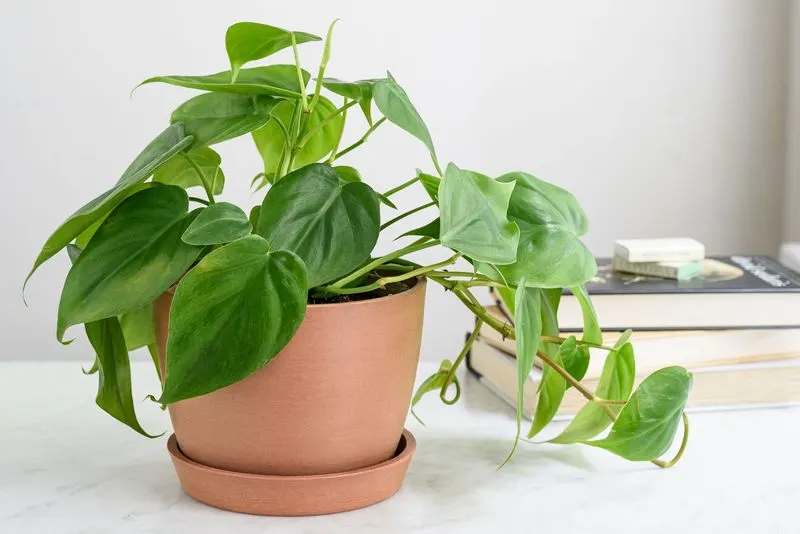
The Philodendron, with its lush, cascading vines, is a favorite among indoor gardeners. Native to the warm, tropical regions of Central and South America, it requires a consistent warm environment to flourish.
Position your Philodendron in indirect light and water it when the top inch of soil feels dry. This plant is versatile, thriving in both pots and hanging baskets. A fun tidbit: The name ‘Philodendron’ is derived from Greek, meaning ‘love tree,’ which reflects its beautiful, heart-shaped leaves.
Bromeliad
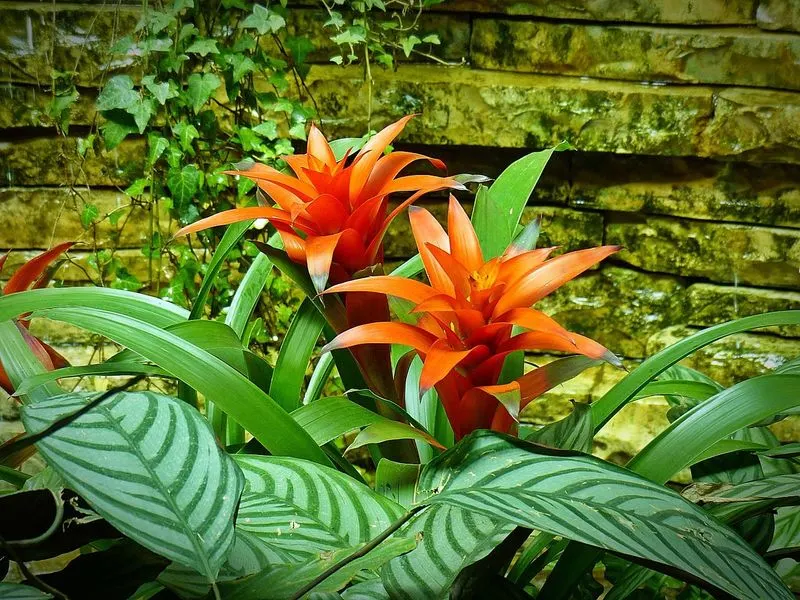
Bromeliads are known for their vibrant, long-lasting blooms and striking foliage. Native to the tropical Americas, they thrive in warm, humid environments and struggle in cold conditions.
To keep your Bromeliad healthy, place it in bright, indirect light and maintain moisture by misting or using a humidity tray. An interesting fact: Bromeliads are epiphytes, meaning they often grow on other plants in their natural habitat, absorbing nutrients and moisture from the air around them.
Anthurium
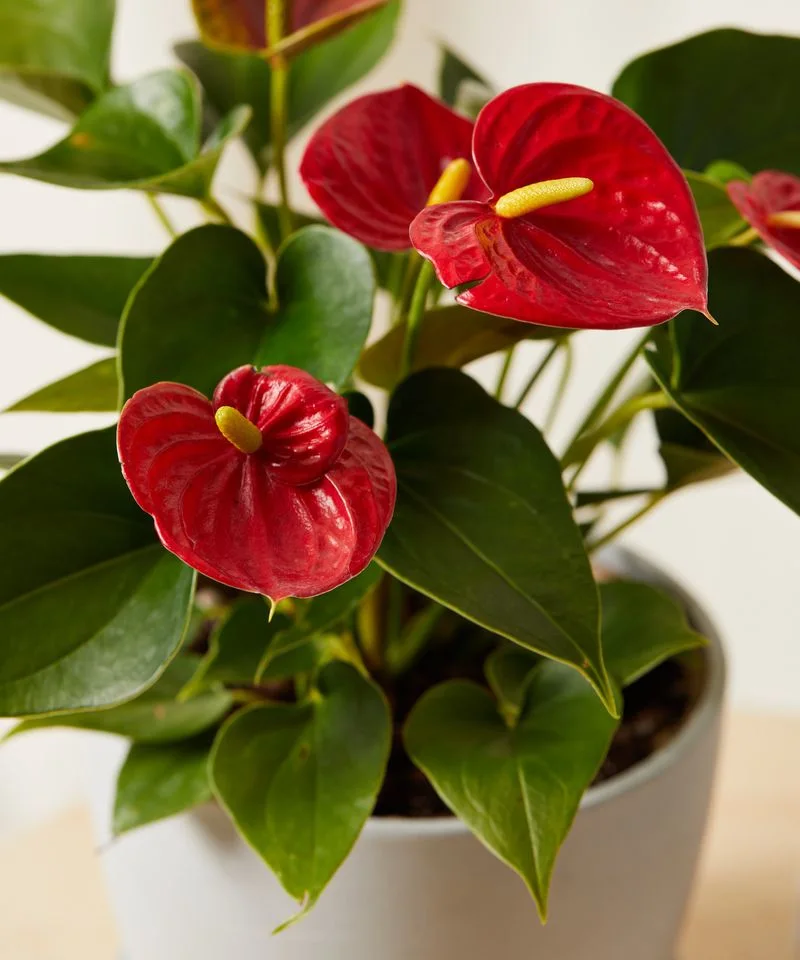
Anthuriums are admired for their glossy leaves and vibrant, heart-shaped flowers. Originating from the warm forests of South America, they prefer a humid, warm environment away from cold drafts.
For best results, place your Anthurium in indirect sunlight and water it regularly, allowing the soil to dry slightly between waterings. Did you know? The colorful part of the Anthurium, often mistaken for the flower, is actually a spathe, with the true flowers being the small clusters on the spadix.
Pothos
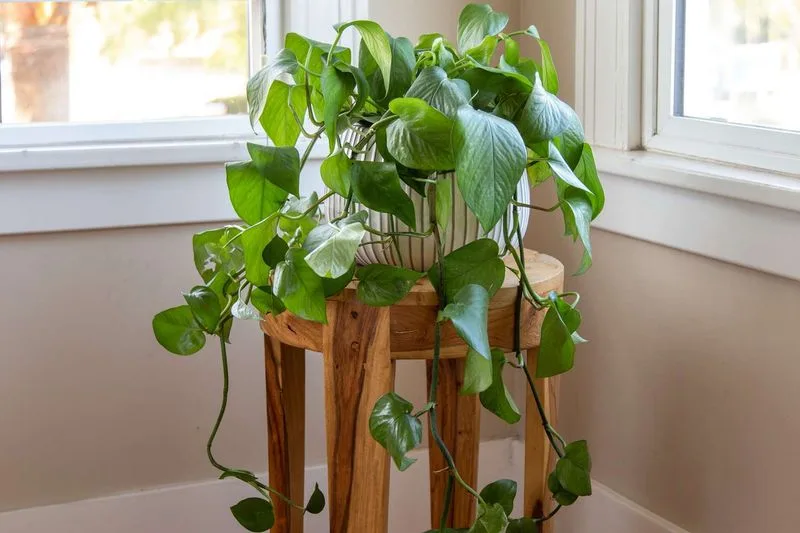
Pothos, with its trailing vines and heart-shaped leaves, is a versatile plant that can brighten any interior. Found in the tropical regions of the Solomon Islands, it prefers warm temperatures, making it unsuitable for cold climates.
Place your Pothos in indirect light and water when the soil feels dry to touch. It is one of the easiest plants to grow, thriving in a variety of conditions. A quirky fact: Pothos is also known as “devil’s ivy” because it’s nearly impossible to kill and remains green even in low light.
Dracaena

Dracaena is celebrated for its tall, elegant stature and vibrant foliage. Native to the tropical regions of Africa, it thrives in warm, humid conditions and suffers in colder climates.
To care for your Dracaena, position it in bright, indirect light and ensure the soil remains slightly moist. It’s a low-maintenance plant, perfect for busy individuals. Fun fact: The Dracaena is known for its ability to clean indoor air pollutants, making it not only beautiful but also beneficial for your home environment.
Schefflera
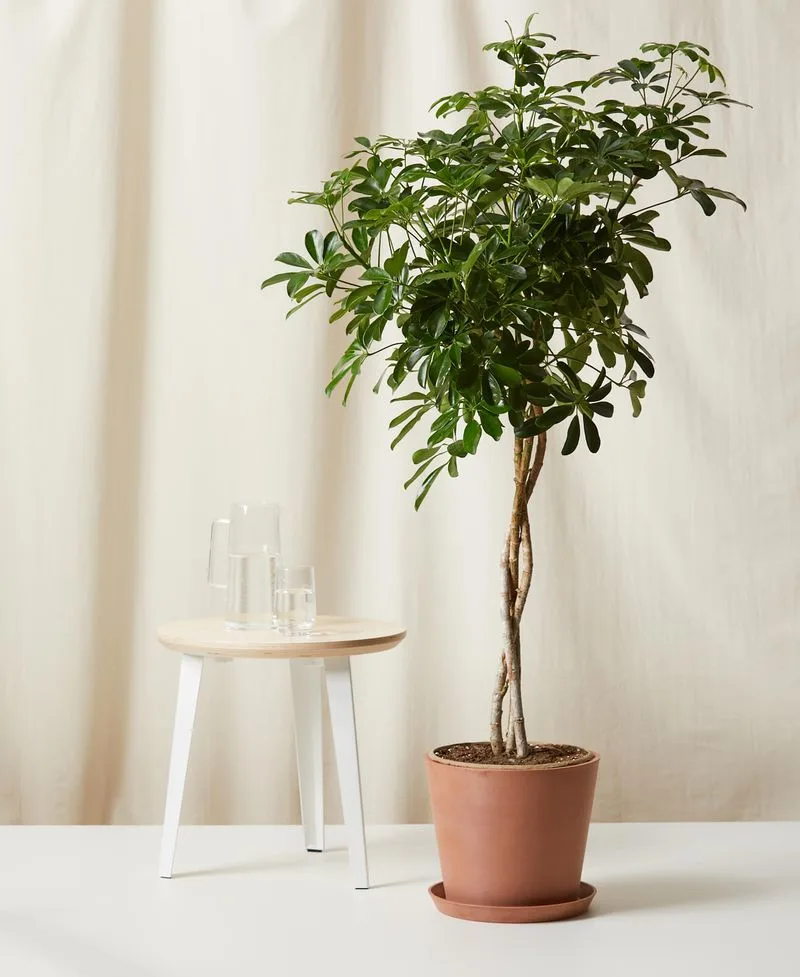
Schefflera, also known as the “umbrella plant,” is appreciated for its glossy, umbrella-like leaf clusters. Originating from the warm climates of Australia and the Pacific Islands, it struggles in cold weather.
Place your Schefflera in indirect light and water it regularly, allowing the top inch of soil to dry out before re-watering. An interesting tidbit: In its natural habitat, Schefflera can grow quite tall, but when kept indoors, it remains a manageable height, making it a versatile addition to your plant collection.
Chinese Evergreen
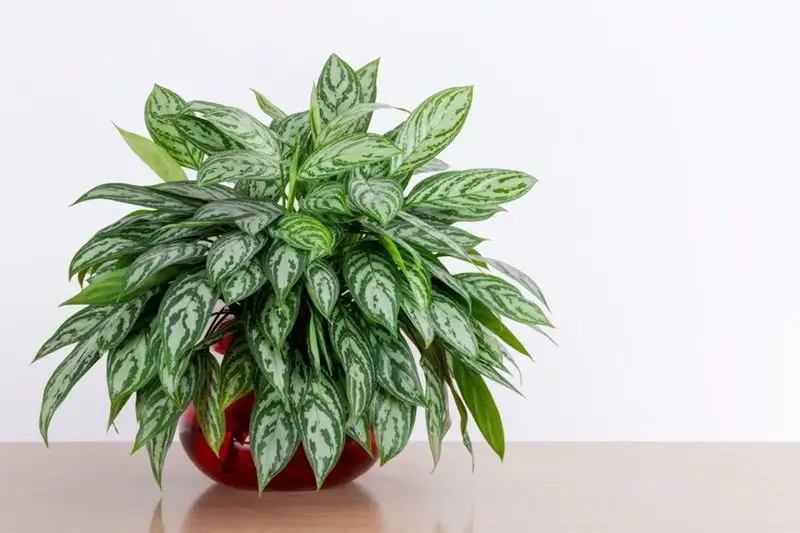
Chinese Evergreens are known for their beautiful, variegated leaves that can brighten any indoor space. Native to the tropical forests of Asia, they require warm temperatures and high humidity, making them sensitive to cold environments.
For optimal care, position your Chinese Evergreen in indirect sunlight and maintain consistent moisture levels. A fun fact: This plant is known for its long lifespan, often thriving for many years with minimal care, making it a favorite among both novice and experienced plant enthusiasts.
Cuban Oregano
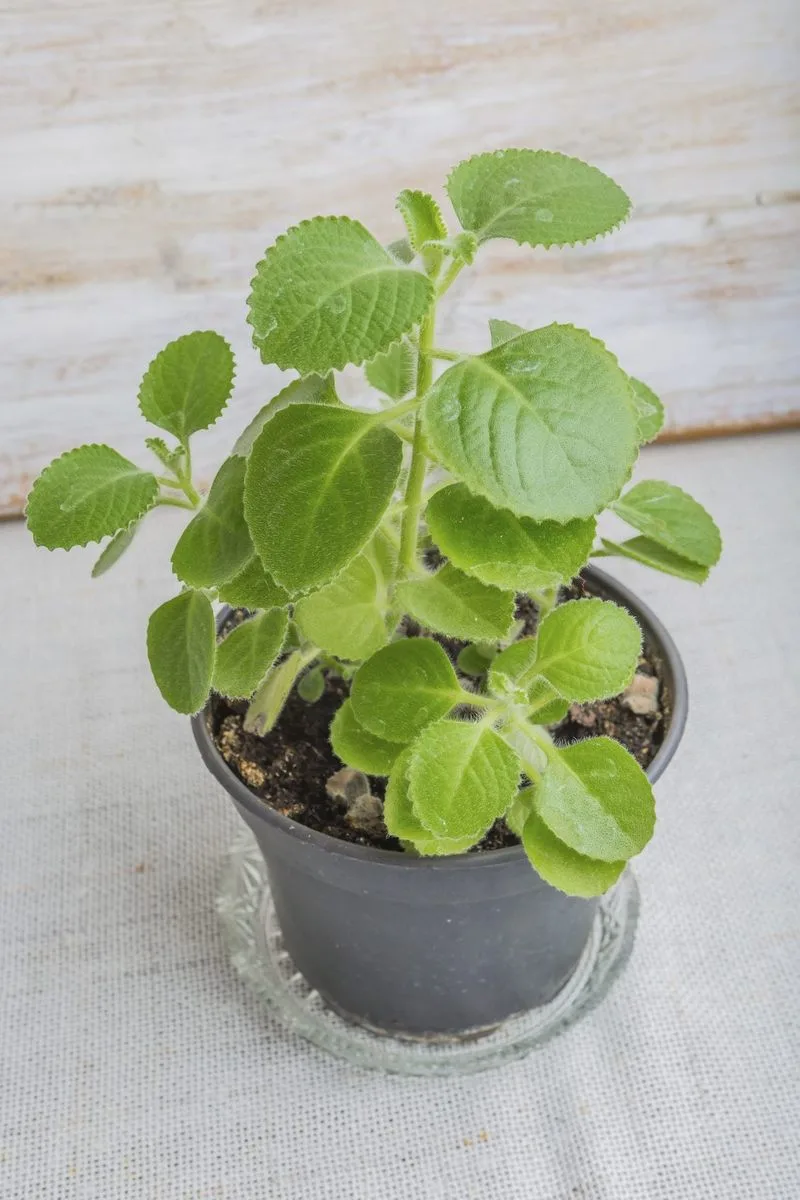
Cuban Oregano, also known as Spanish Thyme, enchants with its rich aroma and unique foliage. Its thick, fuzzy leaves are more than just a feast for the eyes; they serve up a delightful herbal scent. Thriving in warm, sunny spots, this plant is perfect for windowsills.
When temperatures dip, Cuban Oregano needs indoor shelter to maintain its lush appearance. This plant’s inability to withstand cold weather makes it a delicate addition to your indoor garden.
Fun fact: Despite its name, Cuban Oregano is not true oregano but belongs to the mint family.

